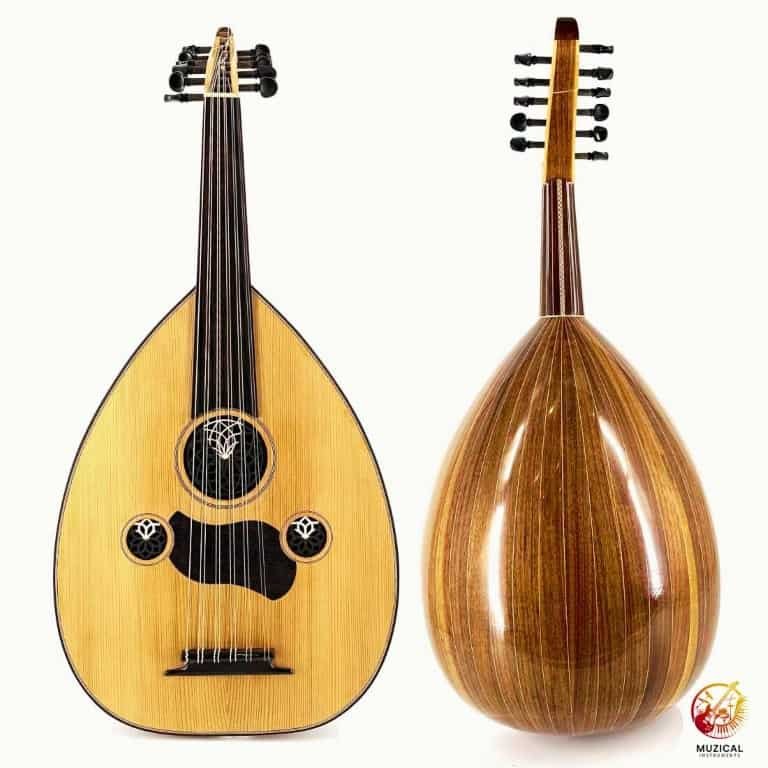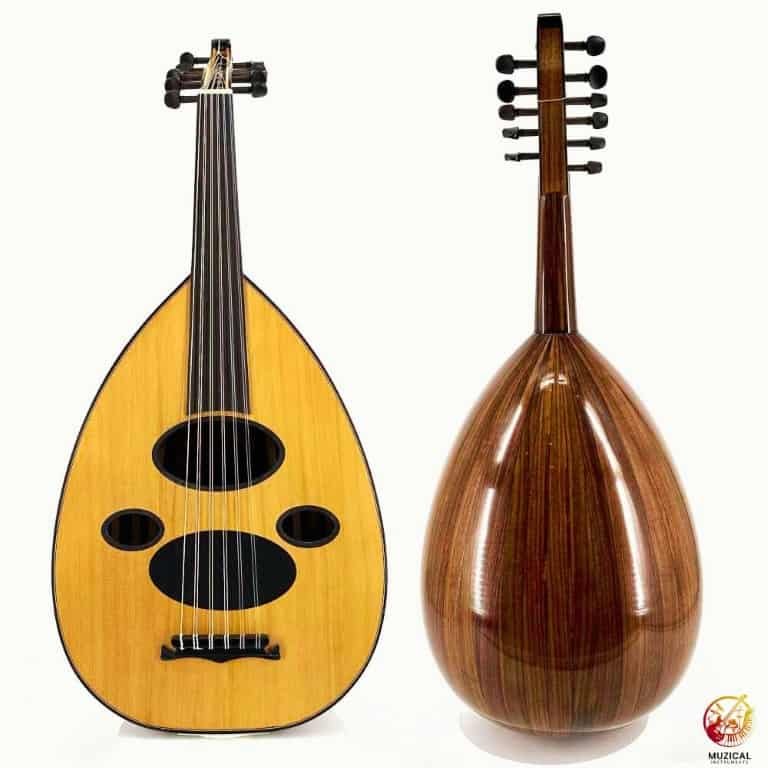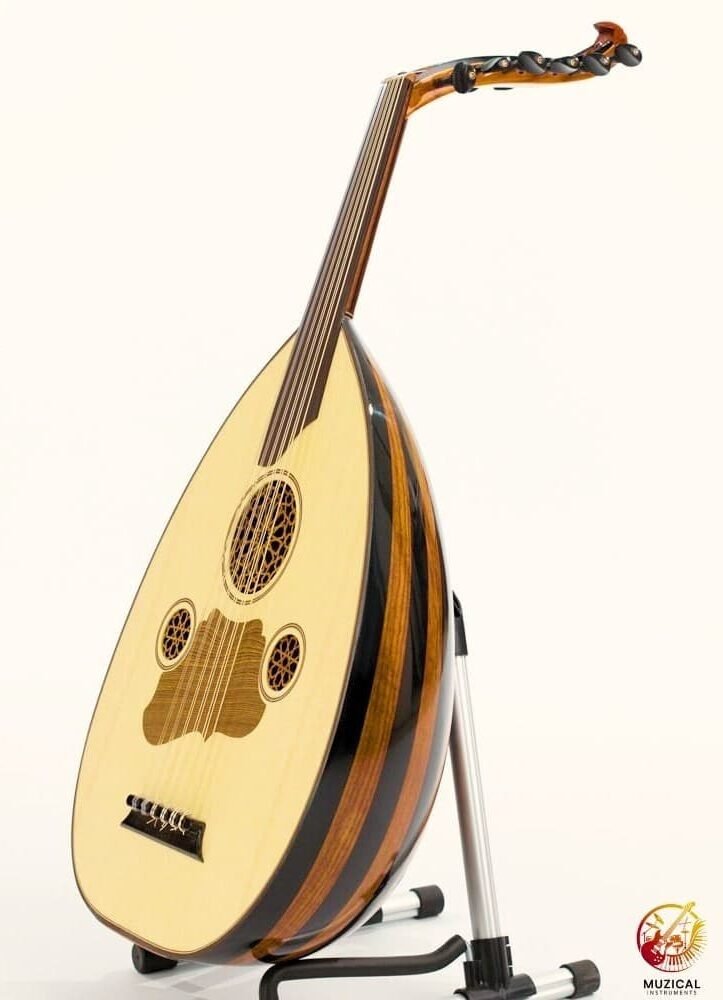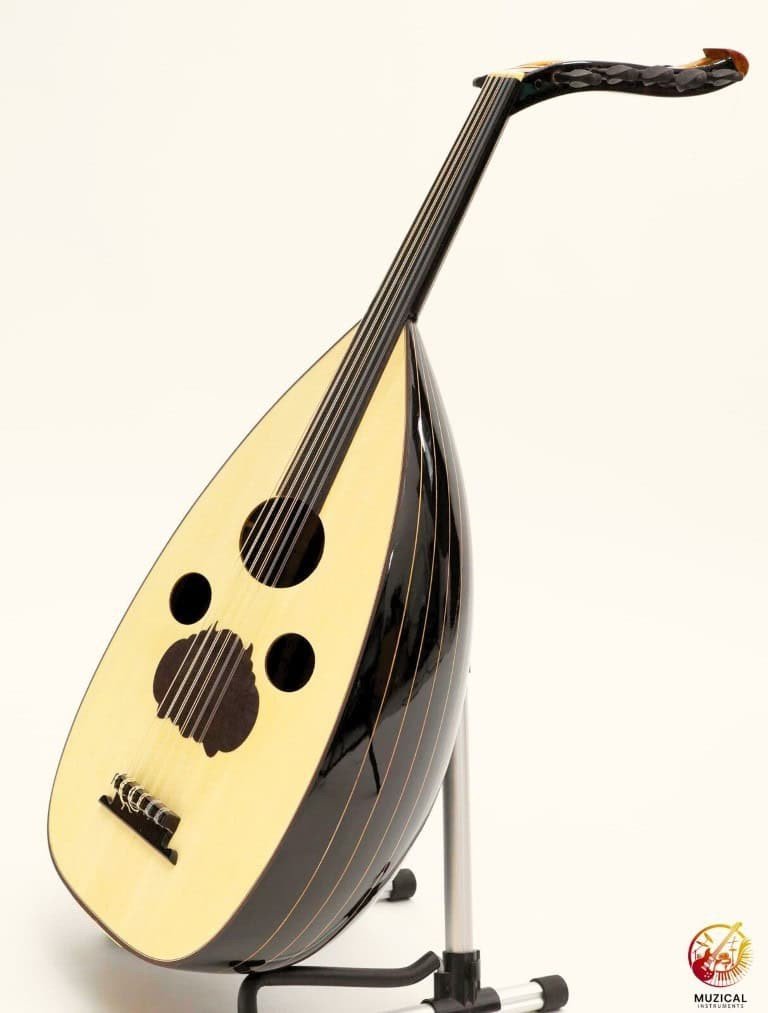What Is the Difference Between Turkish and Arabic Oud?
The difference between Turkish and Arabic oud is more than just a design choice, it touches every part of how you play and how the music feels.
These two instruments may look related, but once you hear or hold them, you’ll notice how different they really are. The shape, sound, and even the emotional weight they carry all tell separate stories from different corners of the Middle East.
In this guide, you’ll see how these ouds differ in shape, sound, tuning, and the way musicians approach them. You’ll also understand how those features shape the kind of music they make and what each one offers you as a player or listener.
By the time you’re done reading, you won’t just know the facts. You’ll have a real sense of which oud might speak to you, whether you’re learning, performing, or collecting.
Difference Between Turkish and Arabic Oud: A Quick Comparison
Here’s a side-by-side look at the core differences:
| Feature | Turkish Oud | Arabic Oud |
|---|---|---|
| Body Size | Smaller, lighter | Larger, deeper |
| Weight | Generally lighter | Heavier |
| Wood Type | Spruce, walnut, maple | Rosewood, mahogany |
| Neck Width | Slim | Thicker |
| String Action | Low | High |
| Tuning | C# – F# – B – E – A – D | C – F – A – D – G – C |
| Sound | Bright, sharp, crisp | Warm, deep, mellow |
| Sustain | Short to medium | Long, rich |
| Best For | Fast melodies, ensemble work | Solo performance, expressive music |
| Risha Technique | Fast, tight flicks | Flowing, soft sweeps |
| Musical Tradition | Turkish classical, Ottoman music | Maqam, Arabic folk and classical |
| Skill Demand | Easier for beginners | More demanding physically |
| Ideal User | Beginners, players with small hands | Experienced players seeking deep tone |
How Do Turkish and Arabic Ouds Differ in Construction?
When you hold a Turkish oud next to an Arabic one, the first thing you might notice is size. Turkish ouds are usually smaller and lighter. Arabic ouds have a deeper, broader body. This size difference impacts everything from comfort during long practice sessions to the kind of sound each oud produces.


A Turkish oud often uses lighter woods like spruce for the soundboard and walnut or maple for the bowl. These materials give the instrument a brighter, sharper tone. The neck tends to be slimmer, and the overall action (the distance between strings and fingerboard) is lower. That makes the Turkish oud easier to play fast runs and ornaments, which are common in Turkish classical music.
Arabic ouds, on the other hand, are typically made with denser woods. The bowl might be crafted from rosewood or mahogany, which contributes to a warmer, more resonant tone. The neck is slightly thicker, and the action is higher, giving each note a fuller voice but demanding more finger strength and precision.
Exploring the difference between Turkish and Arabic oud reveals more than just variations in size and materials; it delves into distinct musical traditions and playing styles. Here’s a quick comparison:
Turkish vs Arabic Oud: Size and Materials
| Feature | Turkish Oud | Arabic Oud |
|---|---|---|
| Body Size | Smaller, lighter | Larger, deeper |
| Wood Types | Spruce, walnut, maple | Rosewood, mahogany |
| Neck Width | Slim | Thicker |
| Action (String Height) | Low | High |
| Weight | Light | Heavier |
Pro Tip: If you’re a beginner, the Turkish oud might feel easier to handle at first because of its size and lower action.
What is the Sound Difference Between Turkish and Arabic Oud?
The sound of the oud is its soul. And this is where Turkish and Arabic ouds take very different paths. The Turkish oud gives off a brighter, crisper, and more treble-forward sound. It’s great for cutting through a dense ensemble or playing intricate melodies clearly.
Arabic ouds are known for their deep, mellow, and almost vocal-like tone. They resonate more, sustain longer, and create a warm texture that suits slower, emotional music styles like maqam or improvisational taqsim.
This sonic contrast highlights a fundamental difference between Arabic and Turkish oud, stemming not only from construction but also from tuning and playing technique. Turkish ouds are usually tuned a whole step higher than Arabic ones. That higher pitch also contributes to their sharper tone.
Let’s break it down:
| Sound Element | Turkish Oud | Arabic Oud |
|---|---|---|
| Tonal Character | Bright, sharp, clear | Warm, deep, resonant |
| Sustain | Short to medium | Long, rich |
| Projection | Strong in upper ranges | Balanced across all registers |
| Best Suited For | Fast melodies, ensemble playing | Solo performances, emotional expression |
Expert Insight: Turkish ouds often shine in classical Ottoman compositions or fast-paced improvisation, while Arabic ouds feel more at home in traditional folk and classical Arabic music.
How Does Tuning Affect Turkish vs Arabic Oud Performance?
Tuning is a crucial difference between Turkish and Arabic oud that shapes the instrument’s entire personality. Turkish ouds are generally tuned higher, which not only increases brightness but also raises string tension. That means notes respond quicker, but also require slightly more precision from your fingers.


Standard Turkish tuning: C# – F# – B – E – A – D
Standard Arabic tuning: C – F – A – D – G – C
Notice the difference? That full-step change makes Turkish tuning feel a bit more “alive,” but Arabic tuning delivers a heavier, more grounded feel.
This matters when you’re picking repertoire. Some Turkish pieces rely on high-tension strings for rapid ornaments. In contrast, Arabic compositions often need the smooth, gliding transitions that come from lower tension and warmer tones.
Contrarian View: Some modern players tune their Turkish ouds to Arabic settings and vice versa. It can open up new sonic territory, but it also pushes the instrument beyond its designed limits, sometimes reducing tone quality or causing damage over time.
What Playing Techniques Set These Ouds Apart?
The shape, size, and tuning of the oud naturally influence how it’s played, leading to another key difference between Turkish and Arabic oud: the playing technique itself. Turkish oud players often use a lighter touch with fast, ornamented phrases. The low action helps with techniques like riz, a rapid tremolo, and hamle, short melodic runs.
Arabic oud players take a more expressive route. You’ll hear long, fluid glissandos and more dynamic volume control. Arabic music traditions often call for slower, more emotional passages, so the instrument’s warmth and sustain play a major role.
Also, the plectrum or risha style differs. Turkish risha technique is tighter and flick-oriented, while Arabic risha has a sweeping, softer motion.
Analogy: Think of Turkish oud playing like sketching with a fine pen quick, detailed, precise. Arabic oud is more like painting with a brush broad, flowing, expressive.
Which Oud Should You Choose?
This brings us to the big question: when weighing the difference between Turkish and Arabic oud, which one is right for you? If you’re just starting, your choice depends on what kind of music you want to play. Do you lean toward Turkish classical, fast improvisation, or lighter ensemble work? Then the Turkish oud might suit you best. If you’re drawn to deep, emotional Arabic music and prefer solo or traditional styles, go with the Arabic oud.
Also consider your physical comfort. A Turkish oud might be better for younger or smaller players. The Arabic oud’s higher action and deeper body may demand more strength and stamina.
Here’s a decision table:
| Player Goal/Preference | Best Choice | Why |
|---|---|---|
| Beginner, small hands | Turkish Oud | Easier handling, low action |
| Warm, emotional sound | Arabic Oud | Rich tone, better sustain |
| Fast technique and ornaments | Turkish Oud | Quick response, bright tone |
| Deep traditional Arabic styles | Arabic Oud | Suited for expressive playing |
Pro Tip: If you can, try both before buying. Nothing beats hands-on experience.
Final Thoughts
Turkish and Arabic ouds may share a common ancestor, but they serve very different musical purposes.The difference between Turkish and Arabic oud is clear in everything from construction and tuning to sound and technique; each has its own soul. You’ve now seen how every detail from neck width to risha style shapes what these instruments can do.
So what’s next? Take what you learned and try listening to recordings of both types. Watch oud players on YouTube. Even better, get your hands on one or the other and feel the difference yourself.
In the end, choosing between Turkish and Arabic oud isn’t about right or wrong. It’s about finding the voice that matches your musical story.
To understand how these styles evolved, it helps to know the history of the Oud in Middle Eastern music and where it all began.
Frequently Asked Questions: Arabic vs Turkish Oud
1. Is the Turkish oud easier to play than the Arabic oud?
Yes, for many beginners, the Turkish oud feels easier to play. That’s because it’s smaller, lighter, and has a lower string action. Your fingers don’t need to press as hard. Fast notes are easier to play, too. But some players prefer the Arabic oud for its deeper sound, even if it takes more effort.
2. Why does the Arabic oud sound warmer?
The Arabic oud uses heavier wood and a deeper body. This gives it a round, mellow tone. Its strings are tuned lower, too. That adds to the warmth. It’s perfect for slow, emotional music with long notes and soft feeling.
3. Can I tune a Turkish oud like an Arabic oud?
Yes, you can. But it’s not always a good idea. Turkish ouds are made to handle higher tension. If you tune it down to Arabic style, the sound may become flat or weak. Over time, it could also hurt the instrument. Best to use each oud with its own tuning.
4. Which oud is better for solo performances?
The Arabic oud is often better for solo playing. Its tone is full and rich, and it holds each note longer. That makes it great for playing slow songs or deep improvisation (taqsim). The Turkish oud is sharper and quick, it works well in groups or fast music.
5. Do professional musicians use both Turkish and Arabic ouds?
Some do, but most players stick with one style. That’s because each oud feels and sounds very different. Switching between the two can be tricky. Still, a few modern artists explore both, especially in fusion music.
6. Is there a price difference between Turkish and Arabic ouds?
It depends on the maker. In general, both have budget and high-end options. Turkish ouds made by top luthiers can be very expensive. The same goes for Arabic ouds from well-known builders. Handmade models with quality wood will always cost more.
7. Can I learn both styles if I’m a beginner?
You can, but it’s better to start with one. Focus on the music style you love most. Learn the technique, tuning, and finger control for that oud first. Later, if you want to try the other, your skills will carry over.
